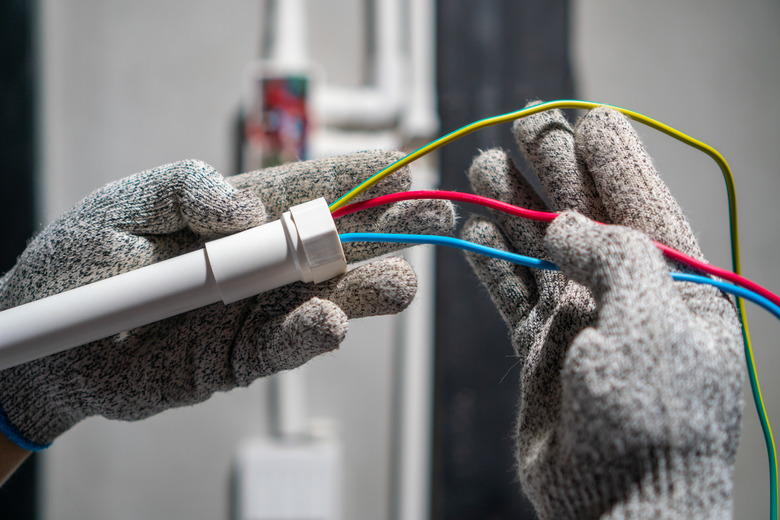What Is A Duct Bank?
We may receive a commission on purchases made from links.
A duct bank or conduit bank is a series of PVC conduits or pipes used to protect wiring running through them. The conduits are protected by a reinforced outer housing or container that is often made of concrete and is usually kept underground. While the average homeowner living on a private single lot may not be concerned about a duct bank, any relatively new structure requiring copious amounts of wiring, such as an office building, school, or high-rise condominium complex, probably has duct banks underground.
How Duct Banks Work
How Duct Banks Work
Electrical and telecommunications lines require a lot less maintenance if they're protected from the elements, from strain, and even from earthquakes. They also need protection from one another, as any bare spots in the coatings on two adjacent live electrical wires could cause the two to touch one another and spark or cause a fire.
PVC ducts or conduits prevent the issue when the individual cables run through them. This makes it easier to organize cables and wires, grouping them based on where they go or what they're for; it's not really that different from organizing cables in a home entertainment setup. It's much easier to troubleshoot problems with wiring or to figure out what goes where when everything is nicely organized. A duct bank is further organization of the conduits, which usually run parallel to one another. A duct bank placed underground often has a stub up access point at either end, making it easier to add new lines within any conduit or to troubleshoot any that need to be repaired or replaced.
For locations such as newer high rises offering a combination of office and residential spaces, duct banks are commonplace. The contractors may run separate duct banks for electrical and data or telecommunications purposes. The conduits for telecommunications make it much easier for the individual carriers to add or update lines, for instance. This also allows for more options when those living or working in the building have different telecommunications carriers. Some installers conveniently put the access points where the carriers can easily access them, resulting in less downtime and easier upgrades when necessary.
Other Duct Bank Benefits
Other Duct Bank Benefits
Duct banks made of concrete also allow for better heat dissipation of electrical cables. There's also virtually no opportunity for animals that chew wires or that burrow underground to get through the duct bank, and there's no chance for animals such as squirrels to cause outages, which sometimes happens when they get a little too curious while trotting around on overhead wires near transformers. When large quantities of wiring have to be laid beneath a roadway or even a parking area, a duct bank protects the conduits and the wires.
When today's data cables become tomorrow's obsolete form of wiring, duct banks make it much easier to replace the cables in one area at a time and for the contractors to find exactly what they're looking for. Extra conduits placed within a duct bank also make it easier for contractors to add new cabling during a project expansion.
